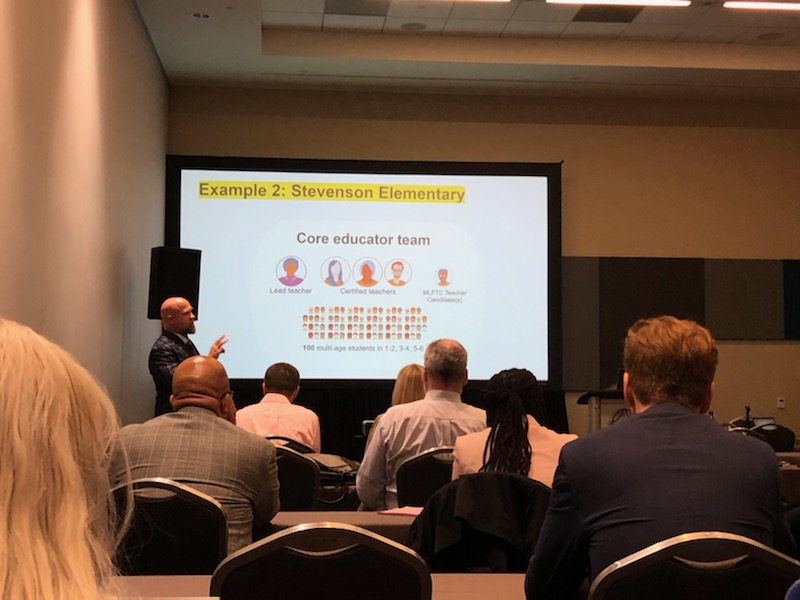About 20 people attended a pre-conference workshop at AASA’s National Conference on Education Wednesday about the Next Education Workforce, a program that reimagines the design of the classroom model, leading to improved teacher retention, learning outcomes and attention to all children.
“You cannot hand somebody 25 … or 180 children and think they can be everything for every one of those kids,” said Carole Basile, dean of the Mary Lou Fulton Teachers College at Arizona State University where Next Education Workforce is based. “The job today is not humanly possible.”
Other presenters — Brent Maddin, executive director of the Next Education Workforce Initiative; Jack Smith, AASA senior consultant and liaison to Next Education Workforce, Standish, Maine; and Randy Mahlerwein, assistant superintendent, Mesa, Ariz. — discussed their reasons for being involved with the program.
The design is based on disrupting the one classroom, one teacher model. Schools reimagined in the Next Education Workforce model would assign a team of teachers to a larger group of students. This gives the students the advantage of a more personalized classroom experience due to the teachers’ varied expertise, degree or certification types and passions.
Additionally, teachers experience a team planning and communication benefit that improves their job satisfaction, said Maddin. And rather than going into crisis mode when one teacher is absent, a school with this approach is always prepared.
For four decades, said Smith, a former superintendent, schools have been “doing well with some kids, not all.” Moving to a design based on Next Education Workforce will require a “mind shift before a physical shift,” he said, but can make a real difference.
In Mesa, Ariz., Mahlerwein said he has seen his schools, teachers and students thrive in this more flexible work environment.
Attendees at the workshop discussed what excites them and gives them pause about the new workforce design and had the opportunity to ask questions of the presenters, who have seen the system in action. The panel also discussed model schools and how to lead the work.
“My role is to create better environments for adults,” Mahlerwein said. “Happy people do better at work.”
(Jacqueline Hyman is managing editor of Conference Daily Online and senior editorial assistant of AASA’s School Administrator magazine.)

